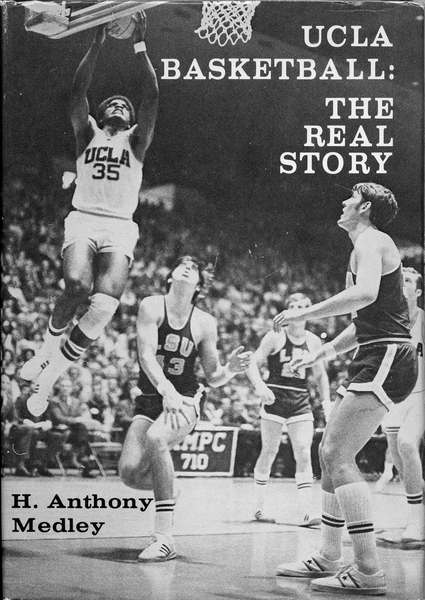|
Out of print for more than 30 years, now available for the first time as an eBook, this is the controversial story of John Wooden's first 25 years and first 8 NCAA Championships as UCLA Head Basketball Coach. This is the only book that gives a true picture of the character of John Wooden and the influence of his assistant, Jerry Norman, whose contributions Wooden ignored and tried to bury. Compiled with more than 40 hours of interviews with Coach Wooden, learn about the man behind the coach. The players tell their stories in their own words. Click the book to read the first chapter and for ordering information. Also available on Kindle. |
|
It Ainít Over (10/10) by Tony Medley 98 minutes. NR. There is one person who will always be on the all-time baseball team, Babe Ruth. But there is another person who should also be on it, Yogi Berra. Oh, sure, Bill Dickey had a higher lifetime batting average, and some people think itís Johnny Bench. But for me, Berra should be No. 1 (in fact, on my list No. 2 isnít Bench or Dickey, itís Roy Campanella, Yogiís contemporary with the Dodgers and also a 3-time MVP). Joe DiMaggio and Mickey Mantle got all the ink, but Yogi was the glue, the mainstay, that connected the DiMaggio era with the Mantle era. He was the three-time MVP (like Joe and Mickey); he was the winner of 10 World Series Championships (like nobody else). But more important, he was probably the greatest clutch hitter in World Series history. He always seemed to get the key hit when they needed it. In fact, probably nobody remembers this, but in the great catch that started a double play made by Sandy Amoros in the seventh game of the 1955 Series that undooubtedly won the Series for the Dodgers, Yogi hit the ball that on any other day with any other left fielder would most likely been a double or triple driving in two runs and tying the game. Instead, Gil McDougald was doubled up trying to get back to first base, and the game ended with a 2-0 Dodgers win (this is not covered in the film). Written and directed by Sean Mullin, this is Yogiís tale, told by interviews with a myriad of players, managers, broadcasters, celebrities, and writers, including his beautiful wife, Carmen, Joe Garagiola, his life-long friend who lived across the street when growing up, Bobby Richardson, Bobby Brown, Ralph Terry, Al Downing, Billy Crystal, Joe Girardi, Bob Costas, Derek Jeter, Hal Steinbrenner, Dale & Larry Berra, Joe Torre, Larry Doby, Jr., Roger Angell, Tony Kubek, Vin Scully, Whitey Herzog, Willie Randolph, Ron Guidry, Lindsay Berra, Don Mattingly and many more. Of course, we hear a lot from Yogi, too, and a lot of Yogi-isms, including some others wrote and attributed to him. But his wife Carmen says that itís easy to tell the fakes from the real ones because the real ones actually make sense when you think about them. It takes Yogi from growing up on The Hill in St. Louis, to being wooed by Branch Rickey, who didnít sign him when he was with the St. Louis Cardinals but immediately tried to sign him when he moved to the Dodgers, but by then he had already signed with the Yankees, and his service in the Navy in WWII when he took part in the Normandy Invasion on June 6, 1944. It also gives the best, detailed analysis of Jackie Robinsonís steal of home in the í55 Series. Yogi insisted he was out until the day he died. The film shows various angles. The truth is still hard to determine but I think I changed my mind. I was a lifelong Yankees fan (until the Dodgers moved to Los Angeles), so I followed them closely. That might make me a little prejudiced. But in addition to being a great player (many commented that he certainly didnít look like a baseball player), Yogi was obviously a truly, really nice guy with a keen common-sense intelligence, and this comes across clearly. You donít have to be a baseball fan to enjoy this American success story.
|
|
|
